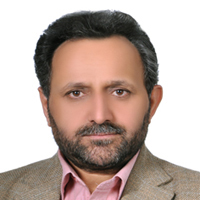Quality of Life in Urban Areas Case Study: District 11 of Tehran Municipality
Author(s):
Article Type:
Research/Original Article (دارای رتبه معتبر)
Abstract:
Quality of life is a comprehensive approach with a variety of physical, social, economic and cultural dimensions. Urban planners believe in improving their quality of life and satisfaction indicators in their plans and programs. The aim of this study was to assess the quality of life in physical, socio-cultural and economic dimensions in order to reach the solutions for improving the quality of life in the 11th municipality of Tehran. The research method was descriptive-analytical and survey using SPSS and Excel software and inferential statistics, t-test and Pearson test. The sample number is 400 randomly selected citizens of the 11th district of Tehran using the Cochran formula. The results of the analysis of the questionnaire show that the quality of urban life in this region is in terms of economic dimension, 58% in the medium level and 53% in the socio-cultural dimension in the medium level and in the physical dimension of 64% is moderate. The most satisfaction of citizens in terms of physical and mental dimensions in the socio-cultural dimension is the lowest. Therefore, challenges such as lack of public transportation, lack of public urban services, inappropriate housing, lack of opportunities and appropriate job positions, lack of social interactions and popular participation have led to lower quality of life in neighborhoods in the 11th district of Tehran. As a result, social, economic, and physical planning is necessary with the participation of citizens to improve the quality of life.
Keywords:
Language:
Persian
Published:
Geographical Urban Planning Research, Volume:5 Issue: 3, 2017
Pages:
357 to 379
https://magiran.com/p1829699
سامانه نویسندگان
مقالات دیگری از این نویسنده (گان)
-
Analysis of Environmental Inequality in Middle East Cities Based on the Systematic Review Method.
Mehran Mahmoodi, Tajeddin Karami*, Vahid Amini Parsa, Ahmad Zanganeh, Seyed Jalil Alavi
Journal of Spatial Analysis Environmental Hazarts, -
Meta-Synthesis of Influential Social Drivers in the Development of Urban Innovation and Knowledge-Based Hubs
Hafez Mahdnejad *, Ahmad Zanganeh
Journal of Sustainable City,


